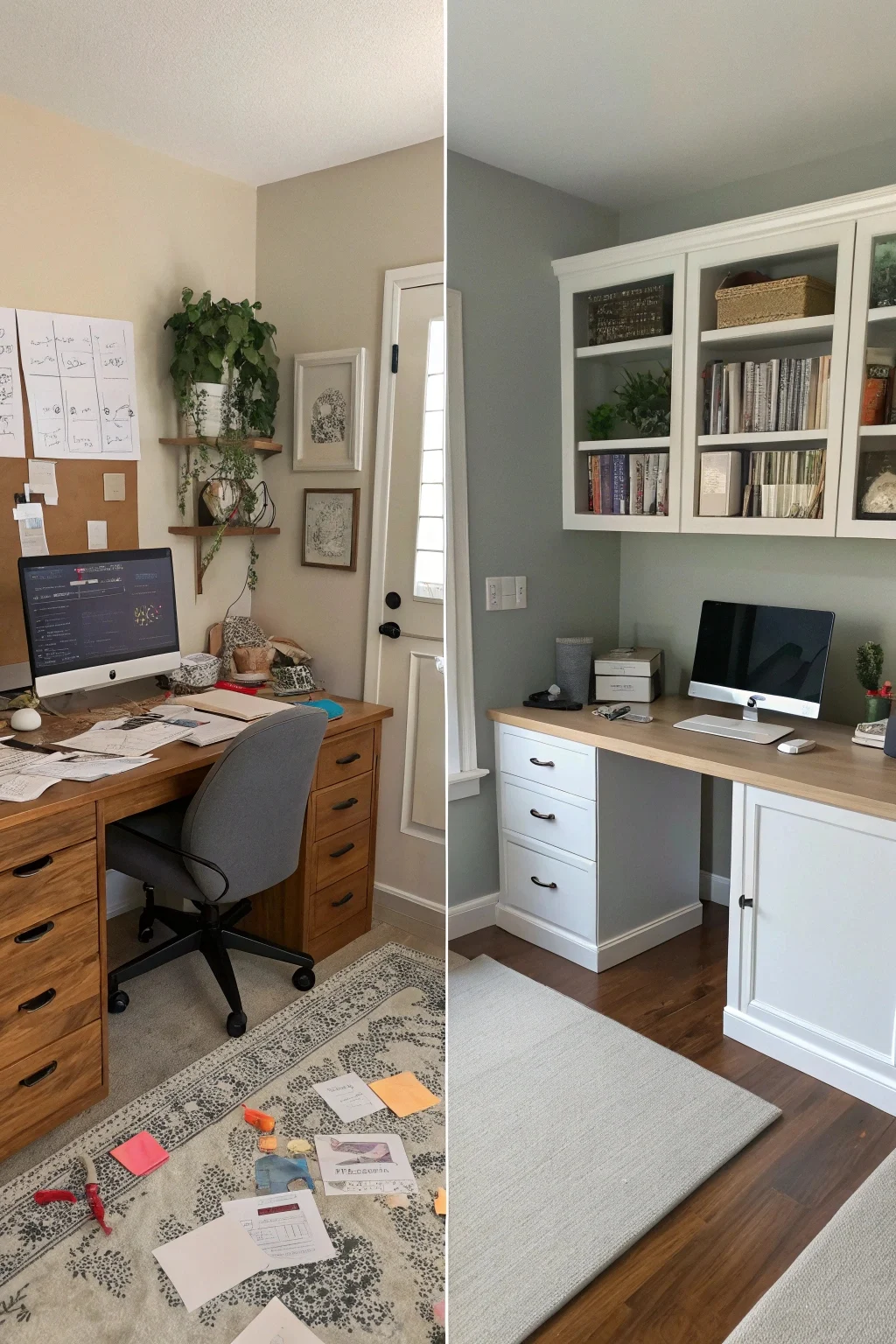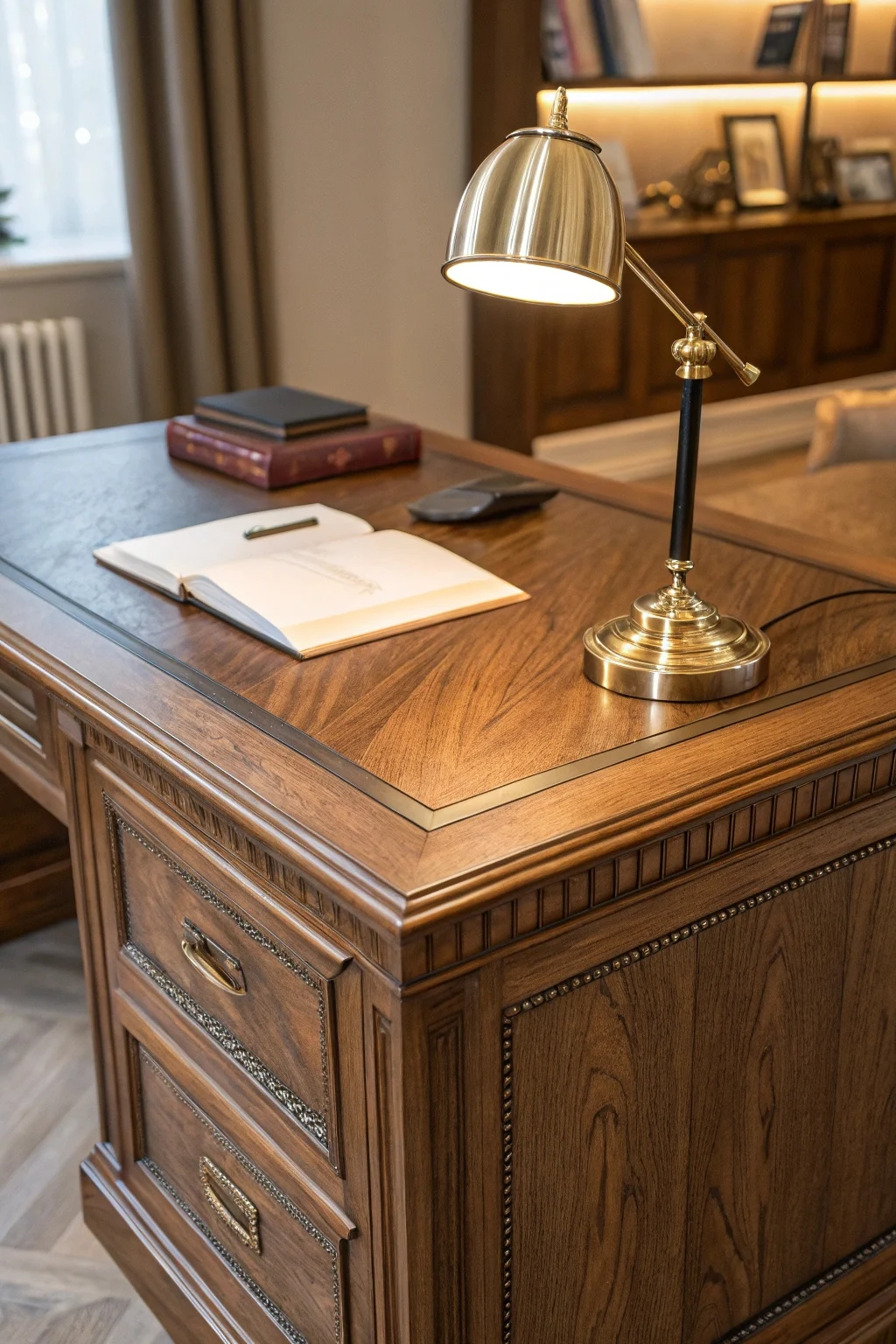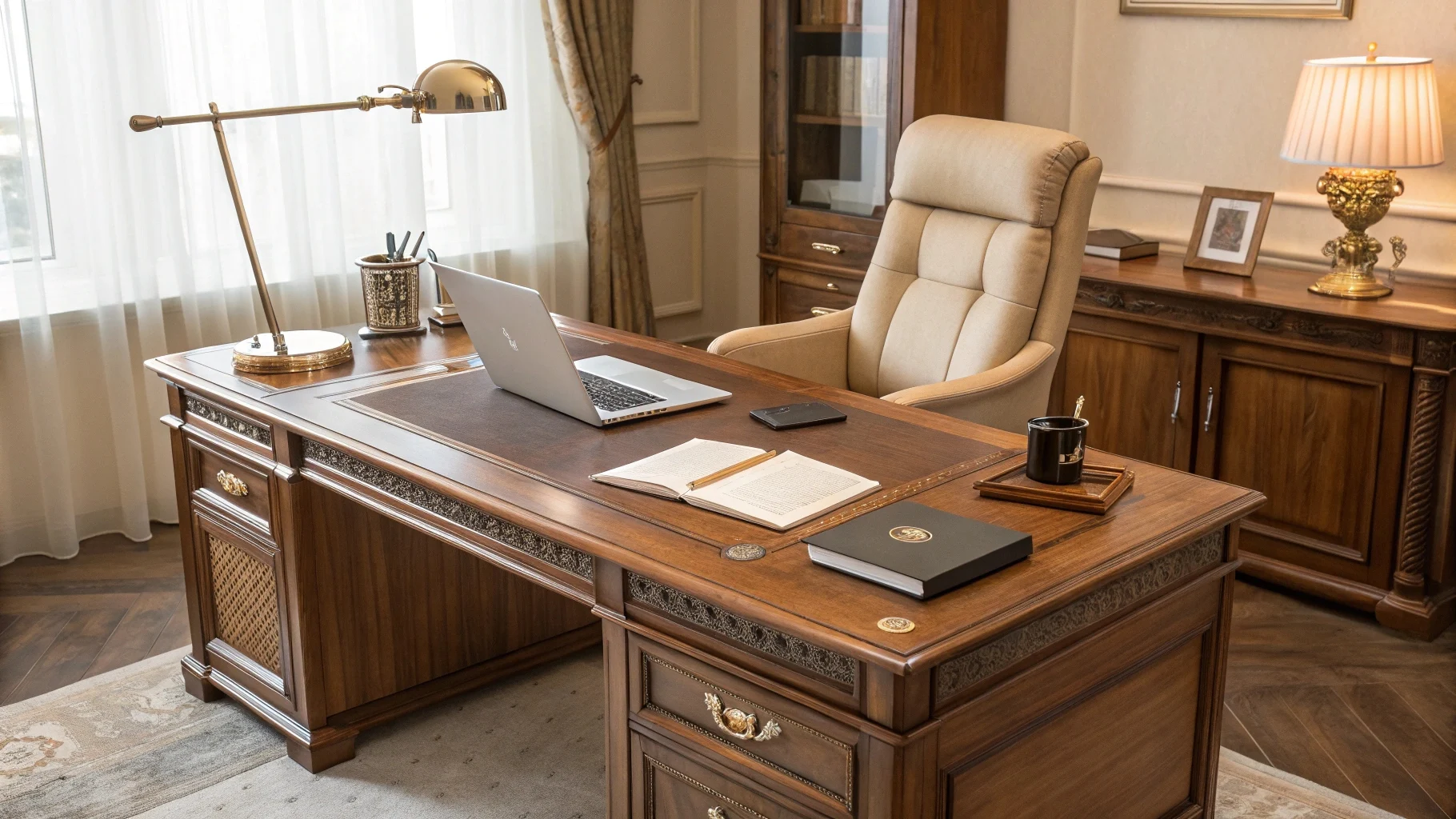Are you a professional working from home, juggling tasks, and striving for peak productivity? In today’s remote work landscape, your home office is no longer just a corner in your house; it’s your command center. And at the heart of this command center lies your desk. While any flat surface might suffice for occasional tasks, a dedicated home office executive desk can be a game-changer, transforming your workspace from chaotic to controlled, and significantly impacting your focus, organization, and even your professional image.
Feeling overwhelmed by clutter or struggling to maintain a professional demeanor during virtual meetings? You’re not alone.
This comprehensive guide will delve into why investing in a quality executive desk is crucial for every home-based professional and provide a step-by-step roadmap to help you choose the perfect one for your needs.
How Does a Home Office Executive Desk Enhance Productivity?
A dedicated home office executive desk isn’t just a piece of furniture; it’s an investment in your efficiency. Let’s explore the tangible ways it can boost your productivity:
Optimized Organization and Reduced Clutter
One of the primary benefits of an executive desk is its ample storage space. Many models come equipped with drawers, cabinets, and often even built-in organizers. This allows you to keep essential documents, stationery, and tech accessories neatly tucked away, leaving the desktop clear and focused.
- Benefit: A clutter-free workspace has been shown to improve concentration and reduce stress. Studies have indicated that physical clutter can negatively impact cognitive function and increase feelings of anxiety (Source: Journal of Environmental Psychology).
- Real-World Example: Sarah, a marketing consultant, struggled with a perpetually messy desk. After investing in a home office executive desk with multiple drawers, she reported feeling more organized and found it easier to locate important documents, saving her valuable time each day.

Improved Ergonomics and Physical Well-being
Spending long hours working at a desk that doesn’t support your body can lead to discomfort, pain, and even long-term health issues. A well-designed home office executive desk can contribute to better ergonomics.
- Benefit: Look for features like an appropriate height, sufficient legroom, and a sturdy surface that allows for the proper placement of your monitor, keyboard, and mouse. Ergonomic setups can reduce the risk of back pain, neck strain, and carpal tunnel syndrome (Source: Occupational Safety and Health Administration – OSHA).
- Checklist for Ergonomics:
- Desk height allows your elbows to rest at a 90-degree angle while typing.
- Sufficient legroom to sit comfortably without feeling cramped.
- Desktop depth allows for proper monitor placement (arm’s length away).
- Sturdy surface that doesn’t wobble or shake.

Enhanced Professionalism for Virtual Interactions
In today’s world of video conferencing, your home office background is often visible to clients and colleagues. A sophisticated home office executive desk can contribute to a more professional and credible image.
- Benefit: A well-chosen desk can create a polished backdrop, conveying a sense of seriousness and attention to detail. This is particularly important for client meetings and presentations.
- Comparison Table:
| Feature | Standard Desk | Home Office Executive Desk | Impact on Professionalism |
| Appearance | Often simple, can look basic or temporary | Typically more substantial, often with a classic or modern design | Higher perceived value |
| Cable Management | Often lacks integrated solutions | May include grommets or hidden compartments for wires | Cleaner, more organized look |
| Storage | Can be minimal or require separate units | Often includes built-in drawers and cabinets | Less visual clutter |
| Overall Impression | Might suggest a casual or makeshift setup | Conveys a dedicated and professional workspace | Increased credibility |

What Key Features Should You Look for in a Home Office Executive Desk?
Choosing the right home office executive desk requires careful consideration. Here’s a step-by-step guide to help you make an informed decision:
Step 1: Assess Your Space and Needs
Before you even start Browse, take stock of your available space and how you intend to use the desk.
- Measure your room: Determine the maximum dimensions your desk can occupy without overwhelming the space.
- Consider your workflow: What equipment will you need to place on the desk (monitor, laptop, printer, etc.)? How much surface area do you require for spreading out documents?
- Think about storage needs: How much storage do you need for files, stationery, and other supplies?
Step 2: Determine Your Preferred Desk Style and Material
Executive desks come in various styles and materials, each offering a different aesthetic and level of durability.
- Styles:
- Traditional: Often features rich wood finishes, intricate detailing, and substantial presence.
- Modern: Characterized by clean lines, minimalist design, and often incorporates materials like metal and glass.
- Contemporary: A blend of traditional and modern elements, offering a balance of style and functionality.
- Materials:
- Solid Wood: Durable, classic, and adds a touch of luxury. Can be expensive.
- Wood Veneer: Offers the look of real wood at a more affordable price. Can be less durable than solid wood.
- Laminate/Melamine: Budget-friendly, easy to clean, and comes in various finishes. May not be as aesthetically appealing as wood.
- Metal: Often used in modern designs, providing a sleek and industrial look. Durable and easy to maintain.

Step 3: Evaluate Functionality and Features
Beyond aesthetics, consider the practical features that will enhance your productivity.
- Surface Area: Ensure the desktop is large enough to comfortably accommodate your monitor(s), keyboard, mouse, and any other essential equipment, with enough space left for writing or spreading out documents.
- Storage Options: Decide on the type and amount of storage you need. Consider drawers (file drawers, pencil drawers), cabinets, and open shelving.
- Cable Management: Look for features like grommets (holes in the desk surface) or built-in channels to keep cables organized and out of sight. This contributes to a cleaner and safer workspace.
- Adjustability: Some executive desks offer height adjustability, allowing you to switch between sitting and standing throughout the day. This can have significant health benefits.

Step 4: Set a Budget and Read Reviews
Executive desks can range significantly in price. Determine your budget beforehand and stick to it.
- Research: Once you have a few models in mind, read online reviews from other professionals who have purchased and used the desk. This can provide valuable insights into the quality, durability, and functionality of the product.
- Consider Long-Term Value: While a higher-priced desk might seem like a significant investment, consider its potential lifespan and the positive impact it can have on your productivity and well-being.
Real-World Example: The Impact of the Right Executive Desk
Consider the case of Mark, a freelance software developer. He initially worked from a small, basic table in his spare bedroom. He often complained of back pain, struggled to stay organized with multiple monitors and cables cluttering his workspace, and felt less motivated in his makeshift office.
After realizing the limitations of his setup, Mark invested in a large, solid wood home office executive desk with ample surface area, built-in drawers, and cable management features. The immediate impact was significant:
- Reduced Back Pain: The ergonomic design and proper height of the new desk allowed him to maintain better posture.
- Improved Organization: The drawers provided dedicated space for his documents and accessories, leading to a cleaner and more focused workspace.
- Increased Productivity: With a dedicated and organized workspace, Mark found it easier to concentrate and was able to work more efficiently.
- Enhanced Professionalism: During video calls with clients, his new executive desk created a more professional and credible backdrop.
Mark’s experience highlights the tangible benefits that a well-chosen home office executive desk can bring to a professional’s home office.
Tips for Maintaining Your Home Office Executive Desk
Once you’ve invested in the perfect home office executive desk, proper maintenance will ensure its longevity and continued functionality.
- Regular Cleaning: Wipe down the desk surface regularly with a soft, damp cloth to remove dust and spills. For wood desks, use appropriate wood polish.
- Avoid Overloading: While executive desks are often sturdy, avoid placing excessive weight on the surface or in the drawers.
- Organize Regularly: Take some time each week to declutter your desk and organize the contents of the drawers and cabinets.
- Protect from Damage: Use coasters for drinks and avoid placing hot items directly on the desk surface. Consider using a desk mat to protect the finish from scratches.

Conclusion: Invest in Your Success with the Right Executive Desk
In conclusion, a home office executive desk is more than just a piece of furniture; it’s a vital tool for any professional working from home. It enhances productivity through improved organization and ergonomics, elevates your professional image, and provides a dedicated space for focused work. By carefully considering your needs, space, style preferences, and budget, you can choose an executive desk that will not only meet your immediate requirements but also contribute to your long-term success in the remote work environment. Take the time to invest in this essential piece of furniture – your productivity and well-being will thank you.
FAQs:
Q: What is the ideal size for a home office executive desk?
A: The ideal size depends on your available space and needs. Consider the number of monitors you use, the amount of surface area you need for paperwork, and your storage requirements. Measure your space carefully before making a decision.
Q: Are standing executive desks a good option for a home office?
A: Yes, standing desks can offer significant health benefits by allowing you to switch between sitting and standing. Look for adjustable height executive desks that meet ergonomic standards in both positions.
Q: What is the best material for a home office executive desk?
A: The best material depends on your budget, style preferences, and durability needs. Solid wood offers a classic look and durability but can be expensive. Wood veneer and laminate are more affordable options. Consider your lifestyle and how heavily you will be using the desk.

